UPSC Daily Current Affairs- 7th November 2023 | Current Affairs & Hindu Analysis: Daily, Weekly & Monthly PDF Download
GS-I
Kamakhya Temple
Subject: Art and Culture
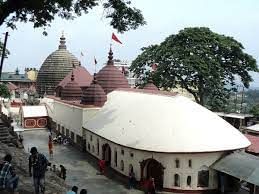
Why in News?
The Bhutan King began his maiden three-day tour to Assam with a visit to the famed Kamakhya Temple atop the Nilachal Hills in Guwahati.
About Kamakhya Temple:
- Location: Situated on Nilachal Hill and adjacent to the southern bank of the Brahmaputra River in Guwahati, Assam.
- Religious Significance: One of the most revered centers of Tantric practices and regarded as one of the oldest of the 51 Shakti Peethas in India.
- Temple Architecture: Designed by combining the traditional Nagara (North Indian) and Saracenic (Mughal) styles, creating the unique Nilachala Style of Architecture. It is the only temple in Assam with a fully developed ground plan.
- Chambers: Comprises five chambers - garbhagriha (sanctuary), antarala (vestibule), Jagan Mohan (principal chamber), bhogmandir (ritual chamber), and natmandir (opera hall for traditional dance and music).
- Architectural Features: Each chamber's superstructure showcases different architectural elements, including a modified Saracenic dome in the main temple, a two-roofed design in the antarala, five domes in the bhogmandir similar to the main temple, and a shell-roof with apsidal end in the natmandir.
- Festival: Ambubachi Mela is a major festival held annually to commemorate the yearly menstruation of Goddess Kamakhya.
Source: The Hindu
Pradhanmantri Sangrahalaya
Subject: Art and Culture
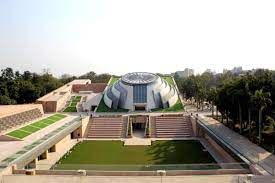
Why in News?
Recently, Shuttle Bus service began from Metro Stations to Pradhanmantri Sangrahalaya
Background
- The visitors were experiencing issues with connectivity between metro stations and Sangrahalaya.
About Pradhanmantri Sangrahalaya
- Location: Teen Murti, New Delhi.
- Pradhanmantri Sangrahalaya: A tribute to every Prime Minister of India since Independence.
- Purpose: It serves as a narrative record of the contributions made by each Prime Minister to the nation's development over the last 75 years.
- Historical Significance: It represents the collective effort and success of India's democracy.
- Teen Murti Estate: The museum is located on the Teen Murti Estate, where India's first Prime Minister, Shri Jawaharlal Nehru, resided for 16 years, emphasizing the continuity of India's leadership.
- Nehru Memorial Museum & Library (NMML): The museum blends seamlessly with NMML, featuring updated and technologically advanced displays on the life and contributions of Shri Jawaharlal Nehru. It also showcases rare gifts received by him.
- Historical Narrative: The museum's narrative begins with the freedom struggle and the framing of the Indian Constitution, marking the inception of modern India.
- Prime Ministerial Journey: It chronicles how India's Prime Ministers navigated the nation through various challenges and fostered all-round progress.
- Significance: The fact that Prime Ministers came from diverse backgrounds and social classes underscores the democratic nature of India, where opportunities were open to all.
Source: PIB
GS-II
Bharat Atta: Subsidized Wheat Flour Scheme
Subject: Governance

Why in News?
In a bid to maintain stability in food prices during the festive season, the Indian government has unveiled a subsidized packaged wheat flour initiative accessible to all consumers.
- Termed “Bharat Atta,” the scheme aims to release a quarter of a million tonnes of state-owned wheat to various cooperative outlets and federations.
Bharat Atta
- Distribution Channels: The government has designated Kendriya Bhandar, a network of cooperative general stores, in addition to the National Agricultural Cooperative Marketing Federation and National Cooperative Consumers’ Federation, as the primary distribution channels for Bharat Atta.
- Reduced Price: Bharat Atta is being offered at a reduced price of ₹27.50 per kilogram, which is lower than the previous rate of ₹29.50 at Kendriya Bhandar.
- Expansion: To ensure wider accessibility, the subsidized flour will be made available at Kendriya Bhandar, NAFED, NCCF, government cooperative outlets, and food vans operated by NAFED and NCCF.
- Government Support: The government is supporting this initiative by milling the wheat through firms selected via a tender process, thereby reducing the milling cost to approximately ₹1.80 per kilogram for large wheat millers.
Why such move?
- Free Cereals: The Prime Minister has recently announced a program to provide free cereals to 800 million beneficiaries entitled to subsidized food for the next five years.
- Price Controls: To address the issue of rising food prices, the government has taken several measures, including the prohibition of wheat and rice exports, establishing a floor price for onion exports, and reducing import duties on pulses.
- Election Context: These anti-inflation measures are being implemented in the context of upcoming assembly elections in five states and an impending general election in the near future.
Challenges in implementation
- Cereal Inflation: India is currently facing a prolonged period of high cereal inflation, which has persisted at double-digit levels for over a year, despite a significant wheat harvest.
- Record Foodgrain Production: The fourth and final estimates for the 2022-23 crop output show a record high in foodgrain production. However, there is a slight decrease in initial estimates for wheat production.
- Positive Outlook: Despite minor fluctuations, wheat production remains higher than the previous year, which suggests a positive outlook for addressing concerns related to food prices.
Conclusion
The government’s subsidized wheat flour initiative, Bharat Atta, exemplifies its dedication to ensuring that the joy of the festive season is not marred by soaring food prices.
Source: Indian Express
Decoding Bhutan King’s India Visit
Subject: International Relations

Why in News?
The recent three-day visit of Bhutan King Jigme Khesar Namgyel Wangchuk to Assam marked a significant milestone in India-Bhutan relations.
- Notably, it was the first-ever visit by a Bhutanese monarch to the state, signifying the close ties between the two neighbours and a fresh chapter of cooperation.
Bhutan and India: Historical Context
- Border Proximity: Despite sharing a 265.8 km border, this visit was the first of its kind, underscoring the uniqueness of the occasion.
- Challenging Times: The peaceful relationship between India and Bhutan faced complexities in the 1990s when insurgent groups from Assam established camps and operated in Bhutan’s southeast forests.'
1990s: Indian Insurgent Presence in Bhutan
- Backdrop: Pressure on insurgent groups in Assam, due to Indian military crackdowns and changes in Bangladesh’s political landscape, compelled them to seek refuge elsewhere.
- Bhutanese Sanctuary: Insurgent groups, including ULFA, NDFB, and KLO, set up camps in Bhutan’s Samdrup Jongkhar district, near the Assam border.
Bhutan’s Initial Approach
- Reluctant Engagement: Bhutan initially ignored the presence of Indian insurgents on its territory and attempted dialogue with them.
- Diplomatic Pressure: The situation strained diplomatic relations with India, its significant neighbor, funder, and trade partner.
- Limited Military Capability: Bhutan’s small and inexperienced military hindered decisive action against the insurgents.
- Unfruitful Talks: Despite multiple rounds of dialogue with ULFA and NDFB, no tangible outcomes were achieved, with the KLO refusing to engage in talks.
Triggers for the Military Crackdown
- Direct Threat to Sovereignty: The presence of insurgents became a direct threat to Bhutan’s sovereignty and national security.
- Impact on Relations: Insurgent activities had negative implications for Bhutan-India relations, affecting development, economic activities, and bilateral trust.
- Humanitarian Consequences: Attacks on Bhutanese nationals, threats, extortion, and violence-affected innocent lives and disrupted travel and trade routes.
- Arms Supply to Ethnic Nepalese: Concerns emerged that insurgents might supply arms to ethnic Nepalese Lhotshampas, who were subjected to repression by the royal government, potentially sparking an ethnic insurgency in southern Bhutan.
Operation All Clear: The Result
- Coordinated Offensive: On December 15, 2003, the Royal Bhutan Army, supported by the Indian Army, launched ‘Operation All Clear,’ simultaneously targeting ULFA, NDFB, and KLO camps.
- Indian Support: India provided logistical and medical assistance and sealed the Indo-Bhutan border to prevent insurgent escape into India.
- Significant Outcome: The operation resulted in the killing or capture of at least 650 insurgents, including top leaders from the three groups.
Conclusion
- Bhutan’s historic royal visit to Assam signifies a strengthening of bonds and a reaffirmation of friendship after a complex period.
- The military operation ‘Operation All Clear’ demonstrated Bhutan’s commitment to safeguarding its sovereignty and security, ultimately contributing to regional stability.
- Today, India and Bhutan stand united, fostering peace, cooperation, and prosperity in the region.
Source: The Hindu
Chief Information Commissioner
Subject: Polity
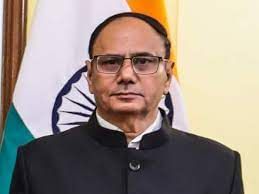
Why in News?
Recently, Information Commissioner Heeralal Samariya was sworn-in as the new Chief Information Commissioner of the Central Information Commission.
Background:-
- President Droupadi Murmu administered the oath of office to him at Rashtrapati Bhavan. Mr. Samariya was currently serving as the Information Commissioner in the Central Information Commission.
About Central Information Commission (CIC):-
- Establishment:2005.
- The CIC was constituted in 2005 under the Right to Information Act, 2005.
- The RTI Act 2005 provides for the constitution of a Central Information Commission and State Information Commissions in each state.
- Jurisdiction: the Commission extends over all Central Public Authorities.
- The Right to Information (Amendment) Act, of 2019 amended the Right to Information Act, of 2005.
- The RTI Act, of 2005 specified the tenure, terms of service, and salaries of the Chief Information Commissioner (CIC) and Information Commissioners (ICs) at the central and state levels, in the parent law.
Structure:-
- The Central Information Commission shall consist of:
- The Chief Information Commissioner (CIC).
- Members: Such numbers of Central Information Commissioners (ICs), not exceeding ten, as may be deemed necessary.
- The members shall be persons of eminence in public life with wide knowledge and experience in law, science and technology, social service, management, journalism, mass media or administration and Governance.
- The CIC or IC shall not be an MP or MLA or hold any other office of profit connected with any political party carrying on any business or pursuing any profession.
- Appointment: The members of the commission are appointed by a committee consisting of the PM (as Chair), the Leader of Opposition (LoP) in Lok Sabha and a Union Cabinet Minister appointed by the Prime Minister.
- Tenure: The CIC and ICs (at the central and state level) will hold office for a term of three years.
- Resignation: The CIC or an IC may, at any time, by writing under his hand addressed to the President, resign from his office.
- Removal: The CIC or an IC may be removed from office only by order of the President on the grounds of proven misbehaviour or incapacity after the
- Supreme Court, on a reference made to it by the President, reports that he/she should be removed on the grounds mentioned.
- The President may also remove them from office if such a person is adjudged insolvent, convicted for certain offences etc.
- They are not eligible for reappointment.
Power and Functions:-
- To receive and inquire into a complaint from any person regarding information requested under the RTI act.
- It can order an inquiry into any matter if there are reasonable grounds (suo-moto power).
- While inquiring, the Commission has the powers of a civil court in respect of summoning, requiring documents, etc.
- Adjudication in the second appeal for giving information.
- Direction for record-keeping.
- Imposition of penalties and Monitoring and Reporting including preparation of an Annual
Source: AIR
GS-III
Pancorius sebastiani
Subject: Environment and Ecology
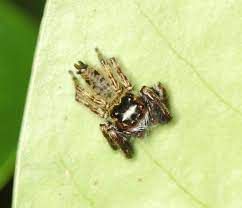
Why in News?
Recently, a new species of jumping spiders’ Pancorius sebastiani’ has been discovered.
Background:-
- It has been discovered from the Western Ghats.
About Pancorius sebastiani:-
- Naming: It has been named Pancorius sebastiani after the late spider taxonomist P.A.
- Distribution: southeast Asia.
- Its distribution was hitherto limited to the east and northeastern regions in India.
- The new species is the first to be reported from the south.
- The males and the females exhibit reddish brown carapace.
- They have yellowish abdomen with black patches and chevron-shaped markings posteromedially.
- It belongs to the jumping spider genus Pancorius Simon, and Salticidae family.
- Only two States, West Bengal and Tamil Nadu, have reported high numbers of Salticidae species, while the others including those harbouring biodiversity hotspots like the Western Ghats and northeastern India have relatively few numbers of species.
Source: The Hindu
Ohio-class Submarine
Subject: Defence
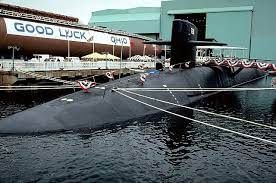
Why in News?
A US nuclear-powered Ohio-class submarine was recently deployed in the Middle East to help prevent the Israel-Hamas war from spiralling into a broader conflict.
About Ohio-class Submarine:
- The Ohio class is a class of nuclear-powered submarines currently used by the United States Navy.
- They are the largest submarines ever built for the U.S. Navy.
- The US Navy has a total of 18 Ohio-class submarines, which consist of 14 ballistic missile submarines (SSBNs) and four cruise missile submarines (SSGNs).
- The SSBN submarines are also known as "Trident" submarines and provide the sea-based leg of the U.S. nuclear triad.
- The 14 SSBNs together carry about half of S. active strategic thermonuclear warheads.
- They were designed specifically for extended war deterrence
- Features:
- The class's design allows the warship to operate for about fifteen years between major overhauls.
- Each of these submarines is provided with two complete crews, called the Blue Crew and the Gold Crew, with each crew serving typically on 70- to 90-day deterrent patrols.
- They can travel at speeds of 30+ knots and remain submerged indefinitely.
- Each SSBN submarine is armed with up to 24 Trident II submarine-launched ballistic missiles (SLBM).
- Each SSGN is capable of carrying 154 Tomahawk cruise missiles, plus a complement of Harpoon missiles to be fired through their torpedo tubes.
Source: The Hindu
|
38 videos|5293 docs|1118 tests
|
FAQs on UPSC Daily Current Affairs- 7th November 2023 - Current Affairs & Hindu Analysis: Daily, Weekly & Monthly
| 1. What is the significance of Kamakhya Temple? |  |
| 2. What is the Pradhanmantri Sangrahalaya? |  |
| 3. What is the Bharat Atta scheme? |  |
| 4. What was the purpose of the Bhutan King's India visit? |  |
| 5. What is the role of a Chief Information Commissioner? |  |





















